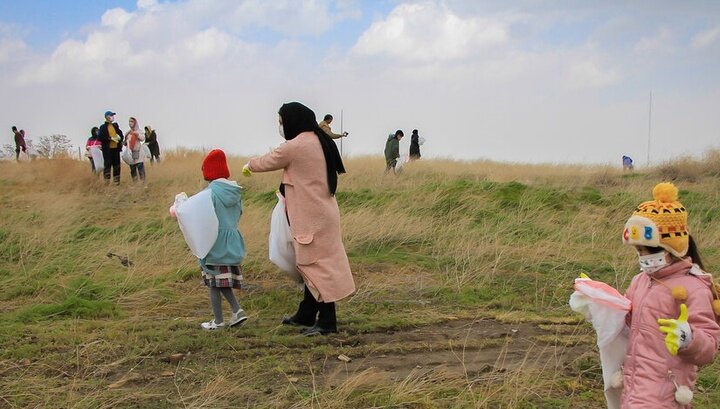Ancient Hegmataneh cleaned by volunteers

TEHRAN - On Tuesday, tens of nature enthusiasts and cultural heritage advocates joined forces to clean up the revered historical site of Hegmataneh, which is situated in modern Hamedan, west-central Iran.
The initiative, timed to coincide with Environmental Awareness Week in Hamedan province, saw volunteers diligently clearing the ancient grounds of accumulated litter and debris, breathing new life into this cherished cultural gem, said Hassan Soltani, who presides over the Hegmataneh historical site.
The official expressed gratitude for the concerted effort, highlighting the significance of the endeavor. Covering an expansive 40 hectares, Hegmataneh encompasses a museum, a church, and the remnants of the historic city's walls, drawing both domestic and international tourists eager to explore its rich tapestry of history.
“This site holds immense historical value, serving as a testament to our shared heritage. However, the presence of waste and litter detracts from its beauty.”
Hegmataneh, which was once the capital of the Medes and later the summer residence for Achaemenid kings, is getting ready to gain UNESCO status.
Ecbatana was first excavated in 1913 by the French Assyriologist Charles Fossey. Excavations are limited due to the modern city covering most of the ancient sites. In 2006, excavations in a limited area of Hegmataneh hill failed to uncover anything older than the Parthian period (247 BC).
Known in classical times as Ecbatana, the ensemble, which partly overlaps with modern Hamedan, was once one of the world’s greatest cities of ancient times.
AM
